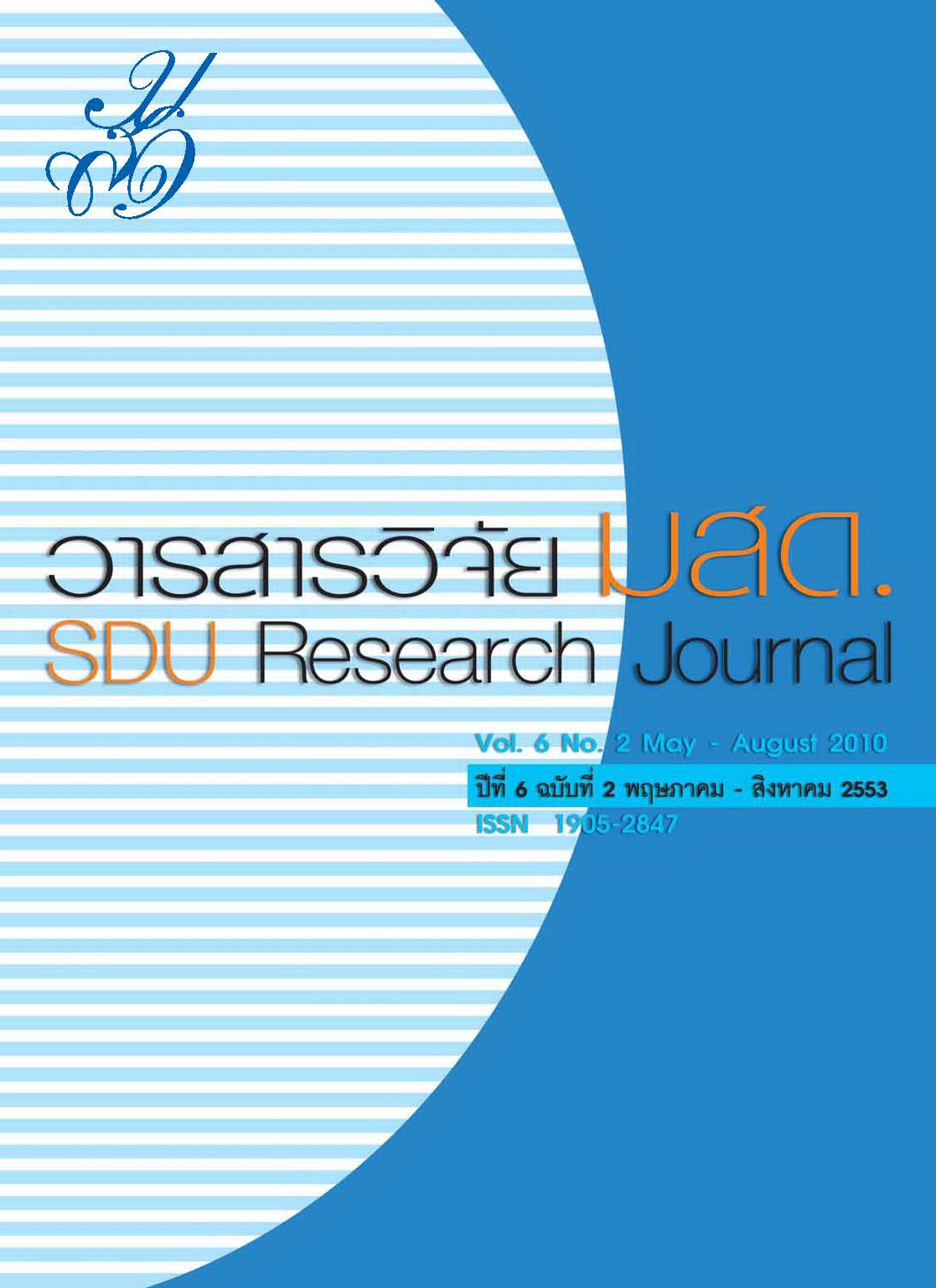กลยุทธ์การพัฒนาทรัพยากรมนุษย์สายวิชาการของมหาวิทยาลัยราชภัฏ เขตกรุงเทพมหานคร
Abstract
Abstract
The purposes of this research were†as follows: 1)†to study the approaches for academic human resourcemanagement of Rajabhat Universities in Bangkok Metropolis; 2) to study and analyze problems, obstacles, andsupporting factors of academic human resource development; 3) to study and analyze the guidelines foracademic human resource development; and 4) to set strategies in academic human resource development ofRajabhat Universities.† The qualitative research methodology was employed in this study. Research data werecollected from three groups of research informants, namely, the first group consisting of 12 administrativepersonnel, the second group consisting of 11 teaching personnel, and the third group consisting of 9 academicsand experts on human resource management in the organization. The researcher set the design of the researchas qualitative. The researcher analyzed and collected data on concepts and theories from documents, texts, andprevious research studies, and conducted fieldwork via in-depth interviews and focus group discussion. In thisstudy the researcher conducted all steps completely according to the conceptual framework, and then took thefindings from the fieldwork study to analyze and integrate based on the set conceptual framework of the study.The strategies in academic human resource development of Rajabhat universities in Bangkok Metropolis couldbe presented in the model of SUCCESS Strategy which comprised the following seven strategies: 1) S, whichmeans the strategy for participatory development of academic human resource; 2) U, which means the humanresource development unit establishment; 3)†C, which means changing the management system;†4)†C, which meansthe creation of human resource values; 5)†E, which means enhancement of organization toward the learningorganization;†6)†S, which means self-unique identity development; and†7)†S, which means syndicate of knowledgenetworking. After having set the model the researcher employed the methodology of quantitative research byusing a questionnaire to collect data from the research sample of 342 persons. Statistics used for data analysiswere the percentage, mean, and standard deviation.








